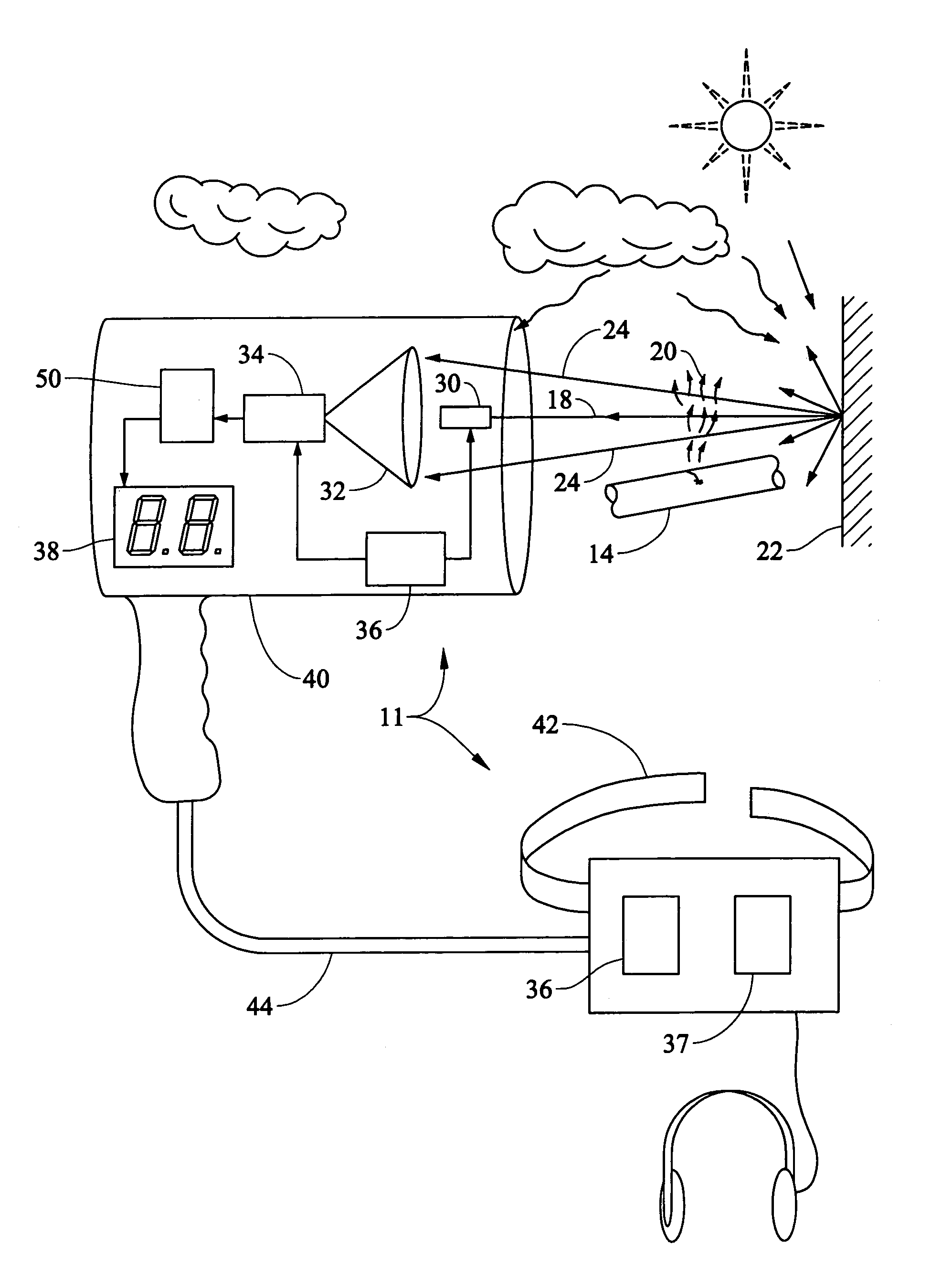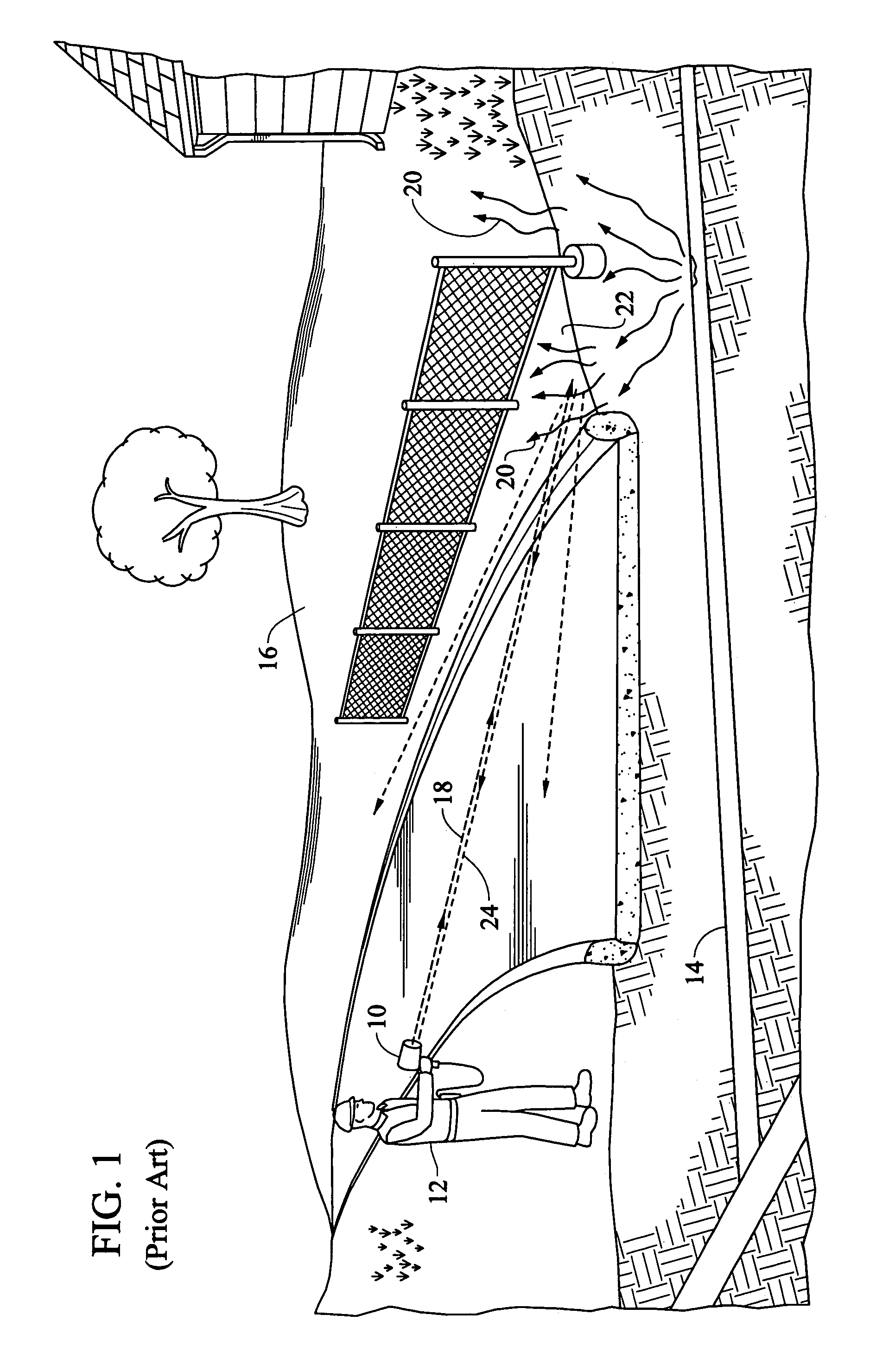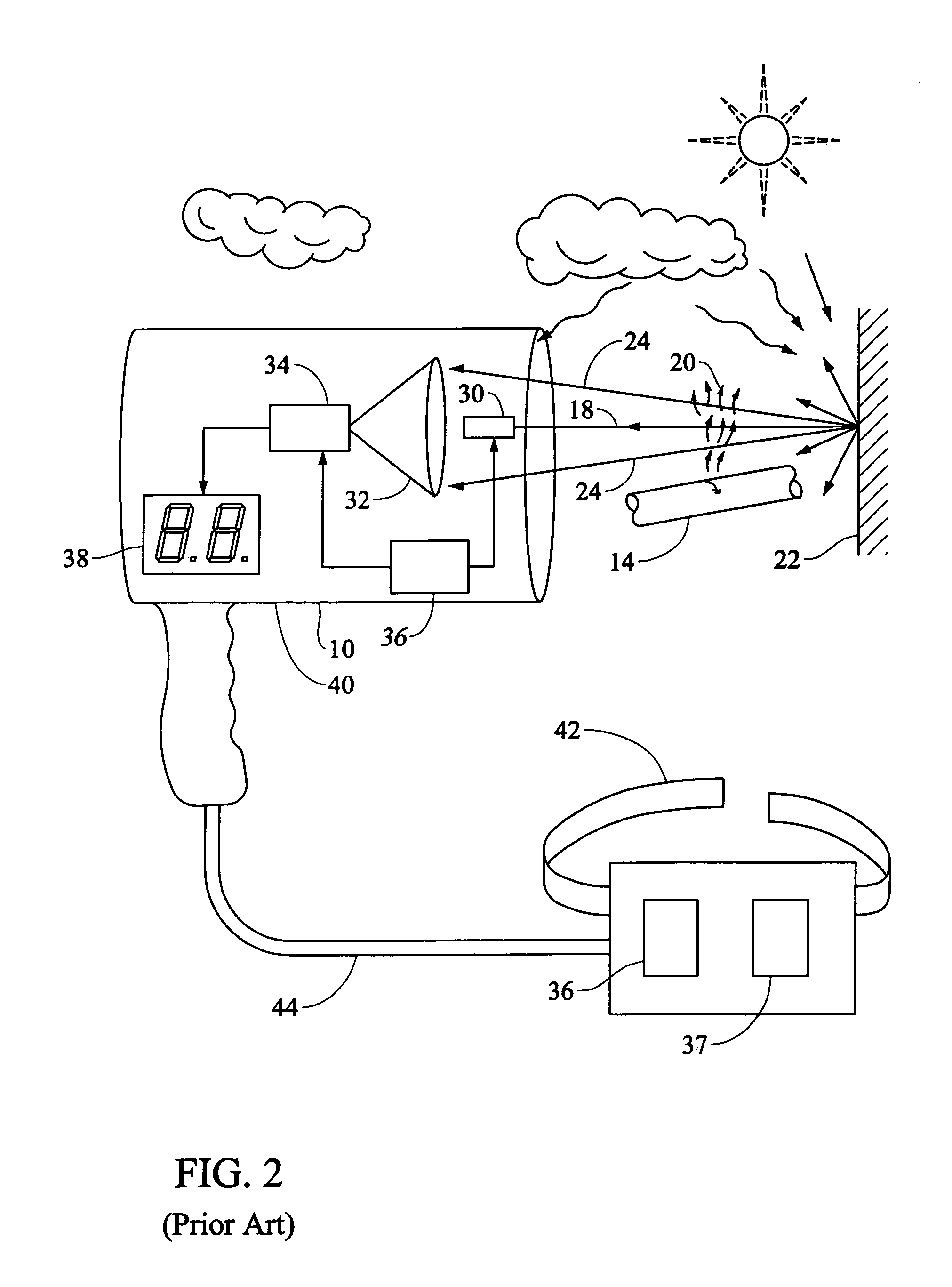Method and apparatus for laser-based remote methane leak detection
a laser-based, remote methane technology, applied in the field of leak detection, can solve the problems of a few seconds detection delay, low sensitivity, and difficulty in detecting low gas concentrations,
- Summary
- Abstract
- Description
- Claims
- Application Information
AI Technical Summary
Benefits of technology
Problems solved by technology
Method used
Image
Examples
Embodiment Construction
[0046]Referring to FIG. 3, a laser methane detector 11 of the preferred embodiment ideally includes a number of functionally interactive components: a laser emitter subsystem 30 that contains a tunable diode laser source module and electronic modules that synthesize the laser modulation and control signals; an optical detector 32, e.g., a photodiode; a signal processing module 34 which contains the electronic components that extract the absorption signal information from the optical detector's output; a system controller 36; a rechargeable battery pack 37; and a statistical methane detection processor module 50. The laser methane detector is preferably packaged into a two-piece system including a hand-held gun 40 (having the laser 30 and detector 32 (combined into an optical transceiver) and a LCD alphanumeric display 38) and a shoulder or waist-mounted controller / battery pack unit 42. The two sections 40, 42 are preferably connected by an umbilical cable 44 having optical fibers an...
PUM
 Login to View More
Login to View More Abstract
Description
Claims
Application Information
 Login to View More
Login to View More - R&D
- Intellectual Property
- Life Sciences
- Materials
- Tech Scout
- Unparalleled Data Quality
- Higher Quality Content
- 60% Fewer Hallucinations
Browse by: Latest US Patents, China's latest patents, Technical Efficacy Thesaurus, Application Domain, Technology Topic, Popular Technical Reports.
© 2025 PatSnap. All rights reserved.Legal|Privacy policy|Modern Slavery Act Transparency Statement|Sitemap|About US| Contact US: help@patsnap.com



